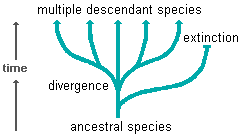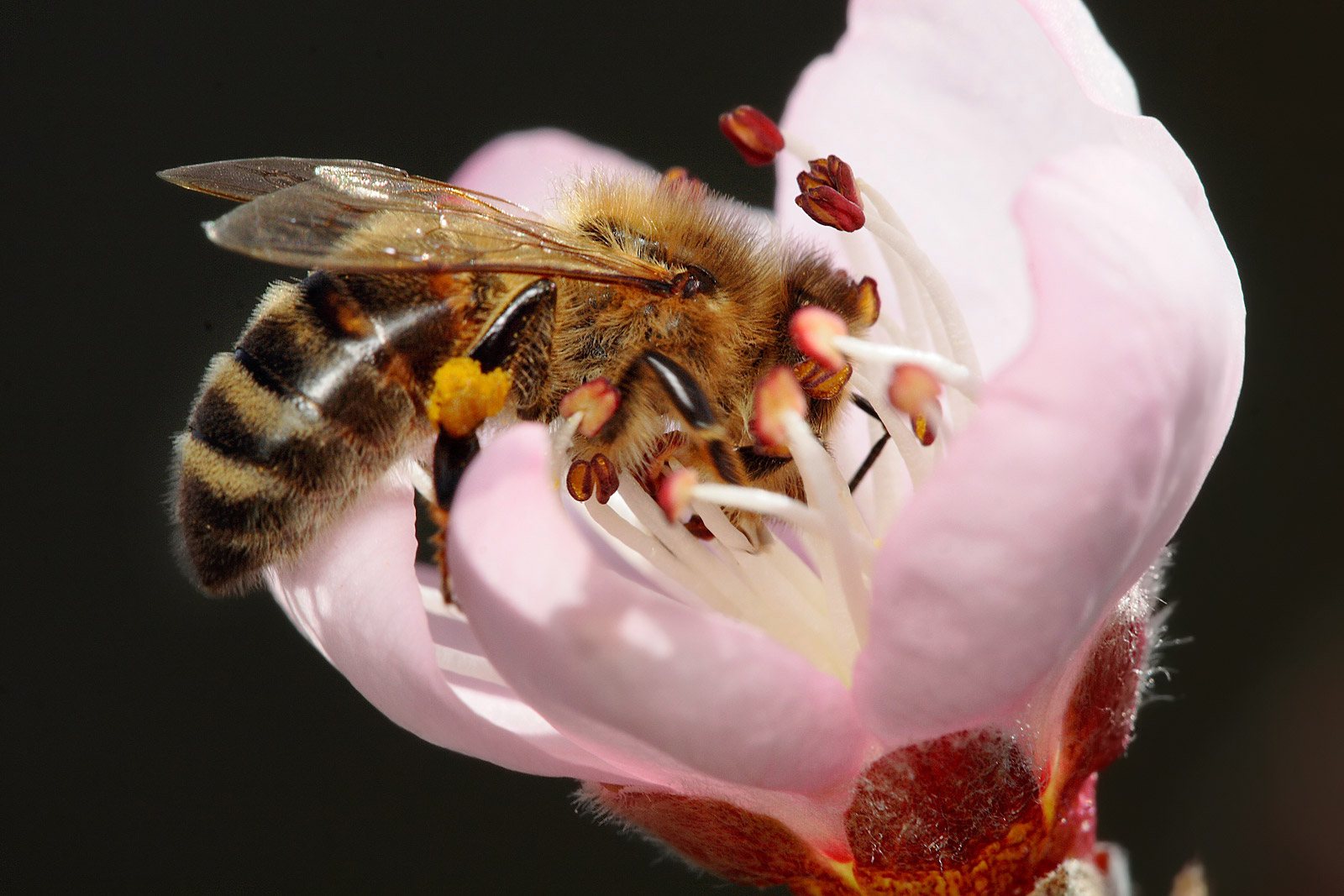Biology Chapter 11 Section 6: Patterns In Evolution

This is a quiz that tests your knowledge on everything that is related with the patterns in evolution.
Preferably, please take a look at our presentation and then try solving the quiz.
This quiz contains potential test questions given by the instructor, as well as other intriguing questions us students made.
- 1.
Which of the following pairs of animals has a symbiotic coevolutionary relationship?
- A.
Crab and snail
- B.
Snowshoe hare and lynx
- C.
Stinging ant and hollow acacia
- D.
Dolphin and shark
Correct Answer
C. Stinging ant and hollow acaciaExplanation
The stinging ant and hollow acacia have a symbiotic coevolutionary relationship. The acacia provides shelter and food to the ant, while the ant protects the acacia from herbivores and clears away competing plants. This relationship has evolved over time as both species have adapted to depend on each other for survival and reproduction.Rate this question:
-
- 2.
The figure below is a diagram explaining which concept?
- A.
Punctuated equilibrium
- B.
Adaptive radiation
- C.
Coevolution
- D.
Convergent evolution
Correct Answer
B. Adaptive radiationExplanation
Adaptive radiation refers to the diversification of a single ancestral species into multiple different species, each occupying a unique ecological niche. This diagram likely represents adaptive radiation as it shows a single starting point branching out into multiple different directions, indicating the emergence of new species from a common ancestor. This process allows for the exploitation of various resources and habitats, leading to increased biodiversity.Rate this question:
-
- 3.
Certain bees have evolved structures that help to pollinate flowers. The flowers have evolved structures that make it easier for certain species of bees to land and collect nectar. What is this kind of evolution called?
- A.
Macroevolution
- B.
Convergent evolution
- C.
Divergent evolution
- D.
Coevolution
Correct Answer
D. CoevolutionExplanation
Coevolution is the correct answer because it refers to the reciprocal evolutionary changes that occur between two or more interacting species. In this scenario, the bees and flowers have evolved structures that benefit each other in the process of pollination. The bees have developed structures that help them collect nectar from the flowers, while the flowers have evolved structures that make it easier for the bees to land and access the nectar. This mutual adaptation and dependency between the bees and flowers is an example of coevolution.Rate this question:
-
- 4.
The term that describes the process in which two or more species evolve in response to each other is convergent evolution.
- A.
True
- B.
False
Correct Answer
B. FalseExplanation
The given statement is false. The term that describes the process in which two or more species evolve in response to each other is actually coevolution, not convergent evolution. Convergent evolution refers to the process in which unrelated species develop similar traits or characteristics due to similar environmental pressures. Coevolution, on the other hand, occurs when two or more species reciprocally affect each other's evolution.Rate this question:
-
- 5.
Through mutation, HIV can accumulate resistance to drugs developed for treatment. Describe the relationship between HIV and the humans who develop these drugs in terms of an evolutionary arms race.
- A.
Stronger virus -> stronger drugs
- B.
Stronger virus -> weaker drugs
- C.
Weaker virus -> weaker drugs
- D.
Weaker virus -> stronger drugs
Correct Answer
A. Stronger virus -> stronger drugsExplanation
In the context of an evolutionary arms race, the relationship between HIV and the humans who develop these drugs can be described as a "stronger virus -> stronger drugs" dynamic. As HIV mutates and becomes stronger, it can develop resistance to drugs that were previously effective. In response, humans develop stronger drugs to combat the evolving virus. This creates a cycle where the virus continually adapts and becomes stronger, leading to the development of more potent drugs to keep up with the evolving virus.Rate this question:
-
- 6.
An example of punctuated equilibrium is the appearance of more than 4,000 mammals following the mass extinction at the end of the cretaceous period 65 million years ago.
- A.
True
- B.
False
Correct Answer
B. FalseExplanation
This statement is false because the example given does not demonstrate punctuated equilibrium. Punctuated equilibrium refers to a pattern of evolution where there are long periods of stability interrupted by short bursts of rapid change. In this example, the appearance of more than 4,000 mammals following the mass extinction does not indicate a rapid burst of change, but rather a gradual diversification over a long period of time. Therefore, it does not align with the concept of punctuated equilibrium.Rate this question:
-
- 7.
Convergent evolution is evolution toward similar characteristics in two or more unrelated species as they adapt to different ecological niche.
- A.
True
- B.
False
Correct Answer
B. FalseExplanation
Convergent evolution is the process by which unrelated species independently evolve similar traits or characteristics due to similar selective pressures in their environment. It is not the evolution towards similar characteristics, but rather the independent development of similar characteristics in different species. Therefore, the given statement is false.Rate this question:
-
- 8.
Are the shells of turtles and snails examples of convergent or divergent evolution?
- A.
Convergent evolution
- B.
Divergent evolution
- C.
Both
- D.
Neither
Correct Answer
B. Divergent evolutionExplanation
The shells of turtles and snails are examples of divergent evolution. Divergent evolution occurs when two or more species with a common ancestor evolve different traits over time due to different selective pressures or environments. In this case, turtles and snails share a common ancestor but have developed different types of shells due to their different habitats and lifestyles.Rate this question:
-
- 9.
Mass extinction occurs at a _________ level.
Correct Answer
global
worldwideExplanation
Mass extinction occurs at a global or worldwide level. This means that it affects a large area or the entire planet, resulting in the extinction of a significant number of species across various ecosystems. Global or worldwide factors, such as climate change, asteroid impacts, or large-scale environmental disturbances, can trigger mass extinctions. These events have occurred multiple times in Earth's history, leading to the loss of biodiversity and significant changes in the composition of species populations.Rate this question:
- 10.
The following is an academic essay that Jae Hyun wrote on the topic of background extinction. Background extinction is one of the three major types of extinction. It has occured intermittently throughout the history of Earth. It affects at least ten different species. Some of the causes of background extinction include, but not limited to: asteroid impact, nuclear power plants, and global warming. As of now, the rate of background extinction is unbalanced by that of speciation; if this continues unabated, another mass extinction may occur on our planet. His biology instructor gave a D on his paper. The instructor said: "You fool, you deserve a F, but the reason that I gave you a D is because at least you managed to include one accurate detail." What is that one accurate detail about?
- A.
How many species background extinction affects
- B.
The causes of background extinction
- C.
The rate of background extinction in relation to that of speciation
- D.
The frequency of background extinction
Correct Answer
C. The rate of background extinction in relation to that of speciationExplanation
The one accurate detail in Jae Hyun's essay is the rate of background extinction in relation to that of speciation. The instructor mentions that this detail is accurate and the reason why Jae Hyun received a D grade.Rate this question:
-
Quiz Review Timeline +
Our quizzes are rigorously reviewed, monitored and continuously updated by our expert board to maintain accuracy, relevance, and timeliness.
-
Current Version
-
Mar 22, 2023Quiz Edited by
ProProfs Editorial Team -
Sep 24, 2011Quiz Created by
Jhpark15
- Air Quizzes
- Atmosphere Quizzes
- Beach Quizzes
- Biome Quizzes
- Climate Quizzes
- Conservation Quizzes
- Desert Quizzes
- Diffusion Quizzes
- Disaster Quizzes
- Ecosystem Quizzes
- Fire Quizzes
- Flower Quizzes
- Forest Quizzes
- Global Warming Quizzes
- Lake Quizzes
- Landform Quizzes
- Mountain Quizzes
- Natural Resource Quizzes
- Nature Of Matter Quizzes
- Osmosis Quizzes
- Plant Quizzes
- Pollution Quizzes
- Recycling Quizzes
- River Quizzes
- Sea Quizzes
- Season Quizzes
- Snow Quizzes
- Soil Quizzes
- Water Quizzes
- Weather Quizzes
- Wildlife Quizzes
- Wind Quizzes
 Back to top
Back to top



